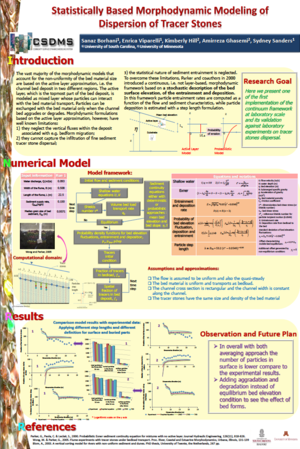Annualmeeting:2017 CSDMS meeting-072
Browse abstracts
Probabilistic Sediment Continuity Equation with No Active Layer

In recent years a large number of numerical models have been developed and implemented to study basic and applied problems of research moprhodyanmics. Some of these models treat the bed material as uniform; others consider the bed material as a mixture of sand and gravel. The vast majority of the morphodynamic models that account for the non-uniformity of the bed material size are based on the active layer approximation, i.e. the channel bed deposit in two different regions. The active layer, which is the topmost part of the bed deposit, is modeled as mixed layer whose particles can interact with the bed material transport. Particles in the rest of the channel deposit, the substrate, can be exchanged with the bed material transport only when the channel bed aggrades or degrades. Morphdynamic formulations based on the active layer approximation, however, have well known limitations:1) they neglect the vertical fluxes within the deposit associated with e.g. bedform migration, 2) they cannot capture the infiltration of fine sediment and tracer stone dispersal and 3) the statistical nature of sediment entrainment is neglected. To overcome these limitations, Parker and coauthors in 2000 introduced a continuous, i.e. not layer-based, morphodynamic framework based on a stochastic description of the bed surface elevation, of the entrainment and deposition. In this framework particle entrainment rates are computed as a function of the flow and sediment characteristics, while particle deposition is estimated with a step length formulation. However, due to the lack of mathematical functions describing the variability of bed elevation, entrainment and deposition, the continuum framework has never been implemented. Here we present one of the first implementation of the continuum framework at laboratory scale and its validation against laboratory experiments on tracer stones dispersal. The validated model is then used to investigate the dependence of the model results on different particle step lengths.
